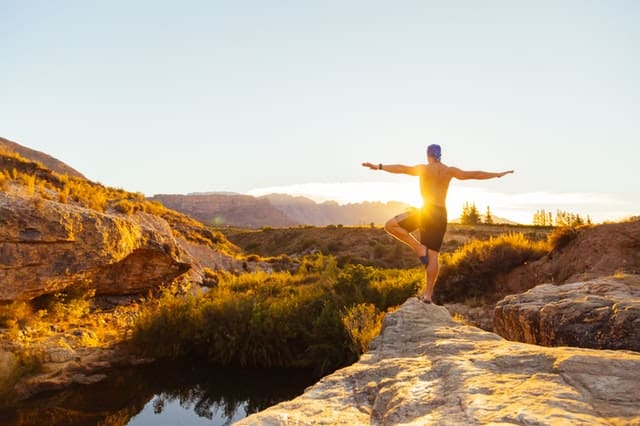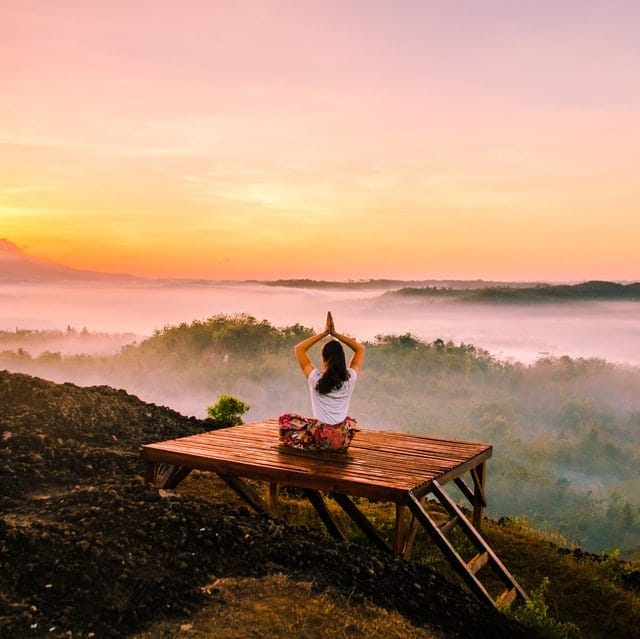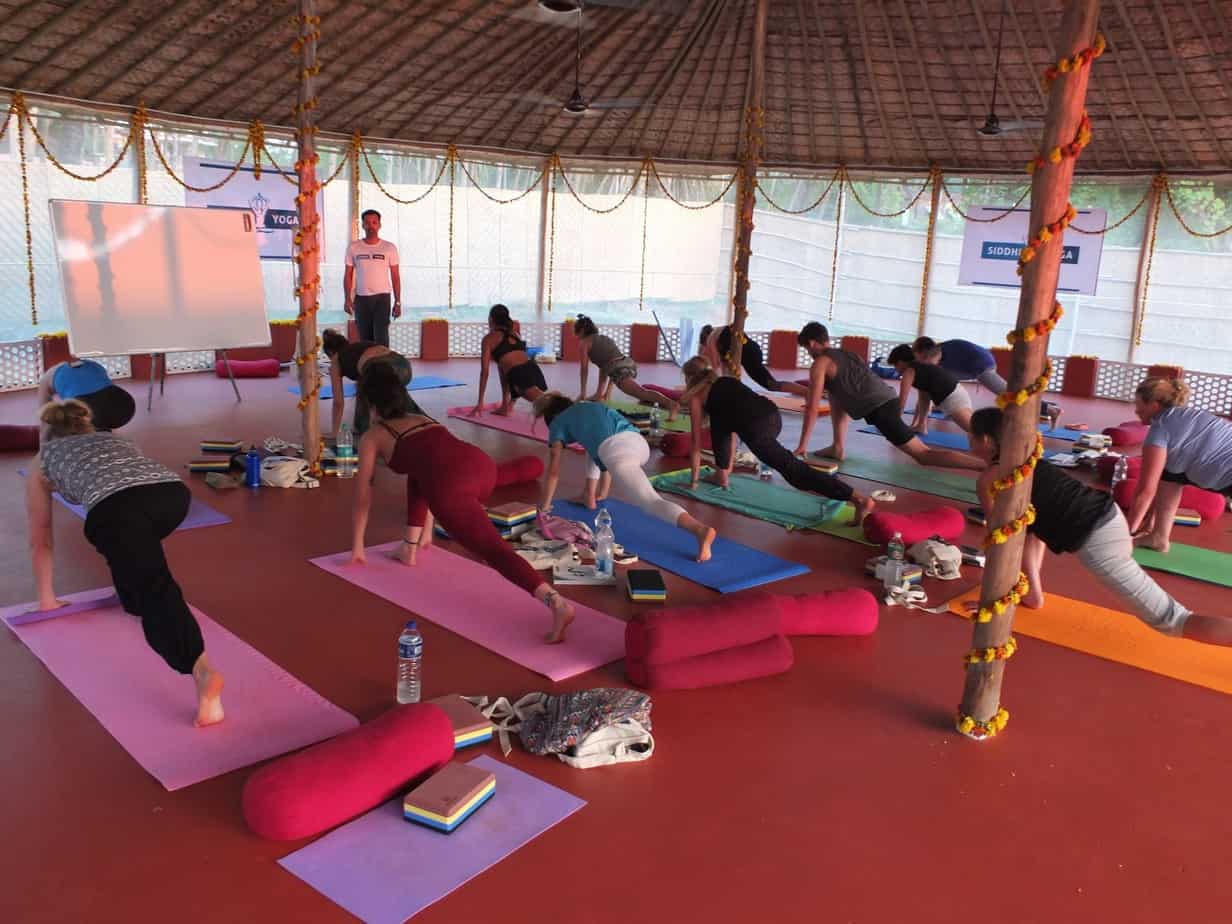There are a lot of reasons you should choose to do your yoga teacher training in India. You will gain a lot in terms of knowledge, conscious thinking, and credentials. Yoga training in India is revered for good reason. It is the birthplace of yoga and is highly honored. They do things in the more traditional and authentic way that is often lost in translation in the West.
India is a very spiritual and sacred country with roots of yoga that have existed for thousands of years. This is the place to do yoga teacher training and you will highly benefit from the experience as a whole.
1. It’s the Birthplace of Yoga
There is just something special about doing yoga teacher training in India. It is the birthplace of yoga and they very much care about retaining the value of the original philosophy of yoga. They take it very seriously here and it is a way of life. That puts you in a position of soaking up some of this passion for yoga. It could change the way you see life and change you in wonderful ways. This country was the inspiration for yoga. You’ll see why when you come here.
2. A Deeper Learning Experience
Doing yoga training in India will give you that deeper learning experience you might not get in the West. The yogis that are teaching you will likely include some local Indians that have grown up under this philosophy of living. Most yoga teacher training in India are going to be about 1 month immersive. This also gets you living and breathing yoga on a daily basis. Then you really begin to understand how it feels to be a devout yogi. When you feel this, you can also transform in ways that make you a better teacher to the practice. You will learn all the things that matter such as anatomy and how to instruct but you’ll get more out of the training.
3.An Inspiring Backdrop
When you do your yoga training in India, you’ll be inspired by the nature that surrounds you. You may end up in the jungle, or at the base of the Himalayas, or maybe near the Ganges. All these things can be deeply inspiring for your own practice. The sounds of birds and other wildlife or the sounds of locals going about their day to day life.

4. More Value for Your Money
The kind of training you’ll get to prepare you to become a yoga teacher is high quality. It is also usually much cheaper than most places around the world. The yoga training in India are often going to include your accommodation, all your food, and the full teacher-training curriculum. You will be getting great education for a fraction of the cost, this is even when you equate your plane ticket and getting there once you’re in the country.
5. You Become More Worldly
There is something that happens when you travel. India is one of the most dramatically different cultures you’ll ever experience. It is beautiful, it is busy, it is dirty at times, but also blissful. The culture is old and they hold onto this so you’ll get a taste of it when you’re there. It is a place you come to really feel like you’re out of your comfort zone. While a bit scary, it is also extremely exhilarating.
6. A Taste of the Authentic
As you immerse in yoga teacher training, you will also immerse in the culture. What you’re learning, locals have known since they were little. They do things mindfully and have a sense of life to them that will be an inspiration to what you’re learning. This authenticity of the real life that inspired yoga in the first place will bring you to a greater place of understanding within your own practice.
7. It’s Good for Your Career
When you take your training in India, it will be recognized. For all the reasons addressed so far, getting your yoga teacher training here is going to get you far. You have established yourself as someone committed to the practice. People will know that you know the various aspects to yoga that perhaps are missed when taught in the West. If you’re opening up your own studio or offering private lessons, you’re more likely to get interest because you did your training in India.
8. Easy to Get Spiritual

Part of yoga is in it’s spiritual teaching. There are many ways yoga can help you to feel good and allowing your soul to shine through is one of them. In India, you are going to feel that spirituality which exists in their normal life. There are so many shrines or gods and ashrams, it’s hard not to feel the vibration. Your teachers are going to talk a lot about spirituality and how it applies to yoga. When you go home, you will have felt what it is to truly be yourself. This is something precious you can pass on to your students.
9. You’ll Visit India in a Safe Setting
India is amazing for many reasons but it can also be quite intimidating. When you attend yoga teacher training in India, you’re going to be brought to a safe community. You will spend your time immersed in your teaching. As you begin to meet people, you will have a crew to hang out with. You can leave the grounds of the resort and maybe even travel with some of the people you meet during your teacher training. This is a great way to see a country that might otherwise deter you.
10. Sightseeing While You’re There
The monumental sights to be seen in India are just as exciting as embarking on a new career as a yoga teacher. In Rishikesh, you can visit the cave where yoga was created. You can spend time meditating near the beloved Ganges River. If you’re going to Goa, you can take in the beach time and cultural experiences. Goa has long been a hippy haven so you can take in the peaceful beach vibes and connect with like-minded people. Dharamsala is the home of the Dalai Lama. There are important museums and monasteries here. All of these places will teach you something about the incredible country of India are an added bonus to deciding to take your yoga teacher training here.
If you decide to do you teacher training in India, get ready for an amazing and transformative experience. There are many that have traveled here to learn in the birthplace of yoga.
